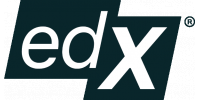- From www.edx.org
Introduction to Aerospace Structures and Materials

- Self-paced
- Free Access
- Fee-based Certificate
- 8 Sequences
- Introductive Level
Course details
Syllabus
Part 1: Material Properties & the Environment
This part presents the basic concepts of material properties and the phenomena of stress and strain in aircraft or spacecraft at different temperatures and in different environments.
Part 2: Materials and Manufacturing Methods
We introduce the properties and manufacturing methods of typical aerospace materials such as metals, ceramics and composites. We will let you play around and create your own materials and ask you to come up with your first design proposal.
Part 3: Aerospace Structures
This part covers the essential structural elements of aircraft and spacecraft. The assignment involves studying the skeleton of your favorite aircraft or spacecraft to identify why certain structural elements were used by their designers.
Part 4: Loads and Stresses
Covers the loads that act on the different aircraft parts, the paths these loads travel on through a structure, and how this affects design choices when designing wings and fuselages. We look at the consequences of pressurized fuselages and of bending of wing spars and how it impacts the design. At the end of this part, you will face your first dilemma as a designer: how to satisfy all the design requirements even if they appear contradictory.
Part 5: Selection of Materials and Structures
This part looks at the structural performance of aircraft and how to select the appropriate structural and materials solutions for a design problem based on stiffness and strength. The concepts of specific strength and specific modulus will be introduced. We will also take you through the basic steps on how to dimension a spacecraft.
Part 6: Design, Certification, Fatigue and Durability
If you are a fan of those aircraft investigation shows on the television, you will most likely enjoy this module. However, we will also show you that life isn't quite like television, should you still be in any doubt. You will learn how, during the design process, many possibilities for failure are already eliminated, and the underlying philosophies for why. We will also discuss fatigue and damage tolerance, as they are critical if we want to monitor and improve the durability of aircraft and spacecraft.
Part 7: Joining & Manufacturing
In this part we look at how aircraft and spacecraft are assembled, what joining methods are used and why. As your final assignment, you will choose a joining method for your aircraft based on a dilemma we will present you with!
Part 8: Wrap Up
As always, no job is done until the paperwork is done. We ask you to look back at your initial expectations and see how far you have come. We also kindly ask you to give us some feedback on what you liked in the course and which bits could be improved.
Prerequisite
Basic knowledge of Physics (concepts of forces and moments, springs and temperature) and some familiarity with aircraft and spacecraft terminology: (e.g. wing, fuselage, tail plane, rocket, launcher).
Instructors
Jos Sinke
Assistant Professor, Aerospace Engineering
Delft University of Technology
Calvin Rans
Associate Professor, Aerospace Engineering
Delft University of Technology
Gillian Saunders-Smits
Associate Professor Aerospace Engineering
Delft University of Technology
René Alderliesten
Associate Professor Aerospace Engineering
Delft University of Technology
Julie Teuwen
Assistant Professor Aerospace Engineering
Delft University of Technology
Katharina Ertman
Lecturer Aerospace Engineering, Delft University of Technology
TU Delft
Editor
L’université de technologie de Delft (en néerlandais : Technische Universiteit Delft), plus connue sous le nom de TU Delft est la plus ancienne et importante université publique des Pays-Bas.
Elle est implantée à Delft, aux Pays-Bas. Elle est positionnée dans le classement mondial des universités QS en 2022 parmi les 10 premières universités en ingénierie et technologie dans le monde. En architecture et génie civil, elle était classée 2e dans le monde, après le MIT (Massachusetts Institute of Technology)

Platform
EdX est une plateforme d'apprentissage en ligne (dite FLOT ou MOOC). Elle héberge et met gratuitement à disposition des cours en ligne de niveau universitaire à travers le monde entier. Elle mène également des recherches sur l'apprentissage en ligne et la façon dont les utilisateurs utilisent celle-ci. Elle est à but non lucratif et la plateforme utilise un logiciel open source.
EdX a été fondée par le Massachusetts Institute of Technology et par l'université Harvard en mai 2012. En 2014, environ 50 écoles, associations et organisations internationales offrent ou projettent d'offrir des cours sur EdX. En juillet 2014, elle avait plus de 2,5 millions d'utilisateurs suivant plus de 200 cours en ligne.
Les deux universités américaines qui financent la plateforme ont investi 60 millions USD dans son développement. La plateforme France Université Numérique utilise la technologie openedX, supportée par Google.

